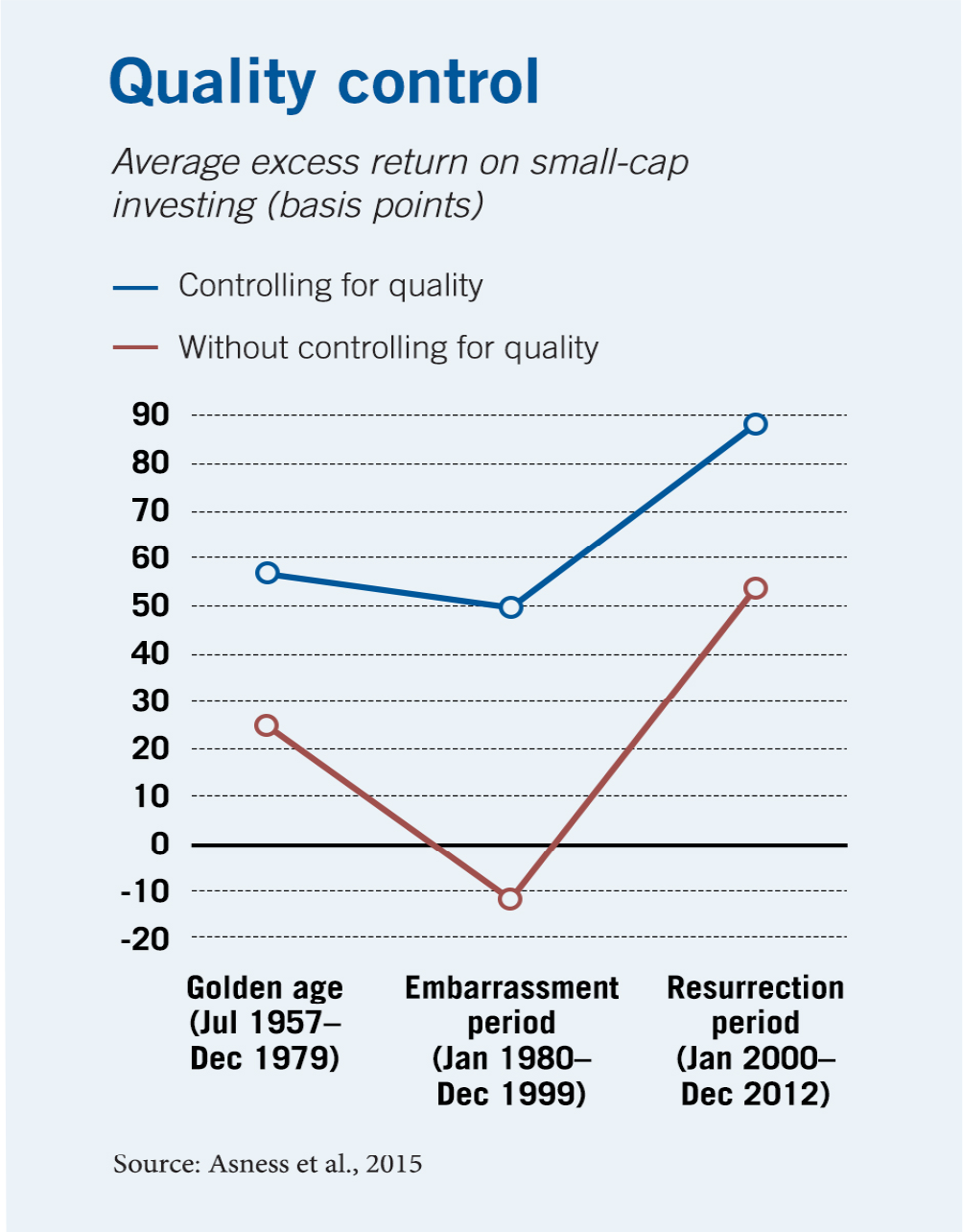
One Factor You May Be Leaving Out of Your Financial Decision-Making
Do your choices reflect the marginal utility of money for you?
One Factor You May Be Leaving Out of Your Financial Decision-MakingHow to get big returns from a small-company portfolio
Sorting stocks based on quality and not just size delivers a consistent premium.

Had investors continued to control for quality, the “golden age” of US small-cap investing that characterized the 1960s and 70s would have continued.
Clifford S. Asness, Andrea Frazzini, Tobias J. Moskowitz, and Lasse H. Pedersen, “Size Matters, If You Control Your Junk,” Fama-Miller working paper, February 2015.

Do your choices reflect the marginal utility of money for you?
One Factor You May Be Leaving Out of Your Financial Decision-Making
Quantitative easing may have played a part in the US financial sector’s current instability.
Did the Fed Contribute to SVB’s Collapse?
What would trouble for China’s second-largest real estate developer mean for the Chinese economy?
Capitalisn’t: Is Evergrande Really China’s Lehman Moment?Your Privacy
We want to demonstrate our commitment to your privacy. Please review Chicago Booth's privacy notice, which provides information explaining how and why we collect particular information when you visit our website.